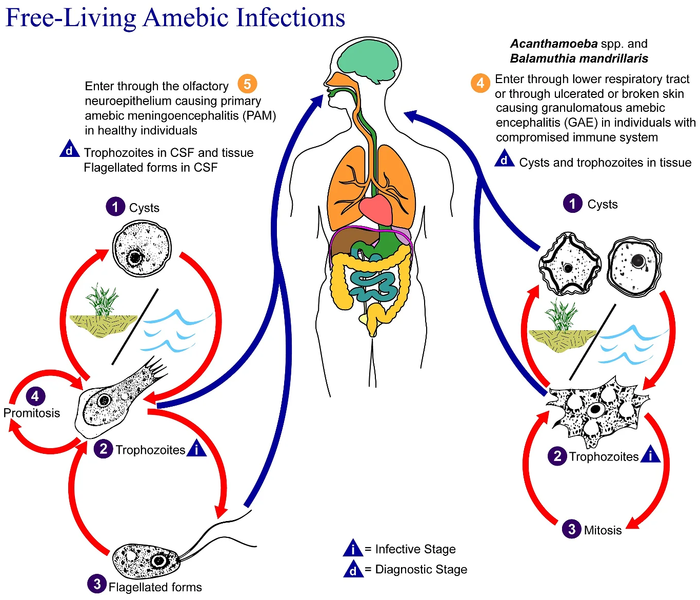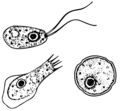Datei:Free-living amebic infections.png

Größe dieser Vorschau: 700 × 600 Pixel. Weitere Auflösungen: 280 × 240 Pixel | 560 × 480 Pixel | 896 × 768 Pixel | 1.195 × 1.024 Pixel | 1.365 × 1.170 Pixel.
Originaldatei zum Herunterladen (1.365 × 1.170 Pixel, Dateigröße: 715 KB, MIME-Typ: image/png)
Dateiversionen
Klicke auf einen Zeitpunkt, um diese Version zu laden.
| Version vom | Vorschaubild | Maße | Benutzer | Kommentar | |
|---|---|---|---|---|---|
| aktuell | 11:24, 2. Feb. 2023 |  | 1.365 × 1.170 (715 KB) | Materialscientist | https://answersingenesis.org/biology/microbiology/the-genesis-of-brain-eating-amoeba/ |
| 08:30, 20. Jul. 2008 |  | 518 × 435 (31 KB) | Optigan13 | {{Information |Description={{en|This is an illustration of the life cycle of the parasitic agents responsible for causing “free-living” amebic infections. For a complete description of the life cycle of these parasites, select the link below the image |
Dateiverwendung
Die folgende Seite verwendet diese Datei:
Globale Dateiverwendung
Die nachfolgenden anderen Wikis verwenden diese Datei:
- Verwendung auf en.wiktionary.org
- Verwendung auf fi.wikipedia.org
- Verwendung auf fr.wikipedia.org
- Verwendung auf gl.wikipedia.org
- Verwendung auf hr.wikipedia.org
- Verwendung auf is.wikipedia.org
- Verwendung auf it.wikipedia.org
- Verwendung auf pl.wikipedia.org
- Verwendung auf te.wikipedia.org
- Verwendung auf vi.wikipedia.org
- Verwendung auf www.wikidata.org
- Verwendung auf zh.wikipedia.org




